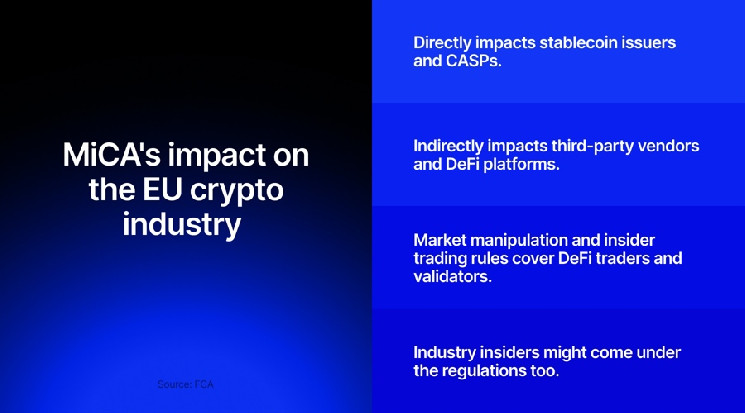The year 2025 marks a crucial turning point for the cryptocurrency industry, with significant regulatory developments on both sides of the Atlantic. In the European Union, the Markets in Crypto Assets (MiCA) regulation has come into full effect, ushering in a new era of oversight for virtual assets.
MiCA, which first targeted stablecoins in June 2024 and expanded to cover all regulated tokens and crypto asset service providers (CASPs) by December of the same year, has set stringent requirements for issuers and intermediaries. While much attention has been paid to how these entities are adapting to the new rules, the ripple effects of MiCA extend far beyond regulated players.
Lesser-discussed but equally important are the implications of MiCA for non-regulated participants in the crypto ecosystem. This includes technical vendors, DeFi platforms, marketing agencies, investors, and day traders, who may find their operations impacted by the new regulatory standards. As regulations spread through the industry, entities that interact with regulated players are also affected, creating a broader distribution of the regulatory burden.
For instance, software vendors specializing in blockchain and digital assets must ensure their technology meets MiCA requirements to retain European clients. Even if a vendor does not fall under the definition of a CASP, providing services to regulated entities places them within the regulatory nexus. Adhering to compliance obligations such as operational resilience, data protection, and AML/CFT measures is essential for staying competitive in the market.
Market manipulation and insider trading prohibitions under MiCA also apply to all industry participants, regardless of their regulatory status. This means that DeFi traders, validators, MEV relays, and even crypto news outlets must evaluate their activities to avoid potential violations. The reach of MiCA extends beyond direct regulation, impacting a wide range of players in the crypto space.
While the brunt of regulatory burden falls on token issuers and CASPs, non-regulated firms must also align with evolving standards to thrive in the new regulatory landscape. As MiCA sets the tone for crypto regulation in the EU and potentially beyond, technology builders and designers must ensure their solutions meet the requirements to navigate this changing environment successfully.
In conclusion, the full implementation of MiCA in 2025 represents a significant milestone for the crypto industry. By understanding and adapting to the regulatory changes, participants at all levels can position themselves for success in a rapidly evolving market.

